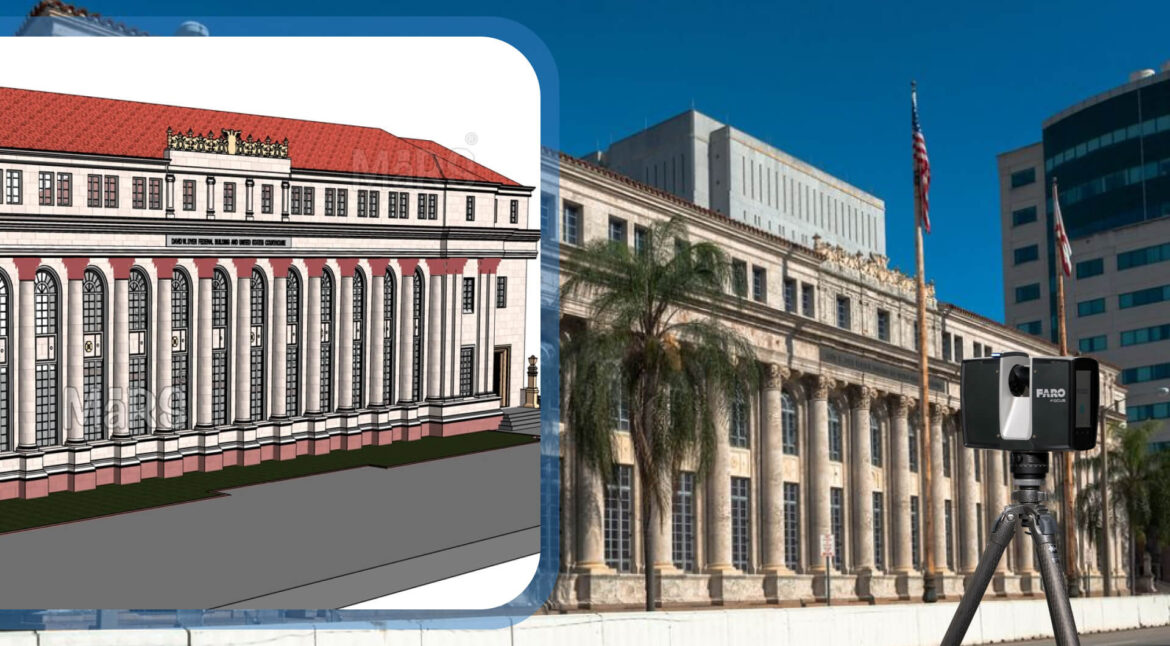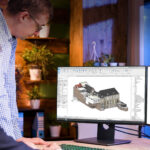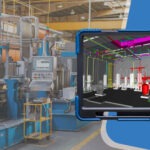The use of Scan to BIM (Building Information Modeling) is one of the most significant changes in the construction industry in recent years. With this technology, existing structures can be scanned with a laser to create detailed 3D models that can be used for a variety of purposes during the construction process. Here are five compelling reasons why Scan to BIM is essential in the construction industry:
Why Scan to BIM is Essential in The Construction Industry?
Enhanced Accuracy and Precision
The improved accuracy and precision that Scanning to BIM offers building projects is one of its main advantages. Traditional techniques for measuring and documenting can be prone to human error, which can result in expensive errors and extra work. In contrast, point cloud to BIM employs laser scanning technology to obtain accurate measurements of a building or site. As a result, extremely precise 3D models are produced that are suitable for planning, designing, and building. It helps guarantee that projects are finished accurately the first time, saving both time and money, by lowering the chance of errors.
Improved Collaboration and Communication
Scan to BIM services helps project stakeholders collaborate and communicate more effectively. This process results in detailed 3D models that give concise and accurate pictures of the project, facilitating understanding and discussion of the design among architects, engineers, contractors, and clients. Identifying and resolving possible problems early in the project, improved communication and reduced the possibility of misunderstandings and delays. Furthermore, real-time access and updates to the shared digital models guarantee that everyone is working with the most recent data.
Efficient Project Planning and Execution
Planning and carrying out projects can be done more effectively with the help of scanned detailed data. A precise representation of the current state of affairs helps project teams to better plan construction sequences, spot possible conflicts, and make sure everything works together as it should. This level of detail contributes to less expensive rework and delays, which results in construction processes that are more streamlined and effective. Moreover, enhanced decision-making and efficient project management are made possible by the 3D visualization of the project.
Cost and Time Savings
Throughout the building process, save a lot of money and time by using BIM. Labor expenses and time are saved as a result of accurate measurements and thorough models, which remove the need for manual measurements and rework. Quick problem-solving also helps to prevent expensive delays and change orders by identifying possible problems early in the project. Construction projects are eventually completed more quickly and at a lower cost as a result of Scan to BIM’s increased accuracy and efficiency.
Better Facility Management and Maintenance
Throughout the building’s lifespan, Scan to BIM offers advantages that go beyond the construction stage. Using the detailed and accurate documentation of the building’s current conditions generated through this process, detailed 3D models can be used for facility management and maintenance. Facility managers can use this information to make data-driven decisions about ongoing maintenance, renovations, and future expansions. Facility managers can more efficiently plan and carry out maintenance tasks, making sure the building is sustainable and performs well over the long term, by having an accurate and comprehensive digital model of the building.
What are some challenges in implementing Scan to BIM?
Implementing Scan to BIM in the construction industry comes with several challenges. Here are some of the fundamental barriers:
Cost Limitations
3D laser scanning software and equipment can have significant initial expenses. For smaller businesses with tighter budgets, this could be a major obstacle.
Lack of Awareness and Training
The advantages of laser scanning and its abilities are still largely unknown to professionals in the construction industry. Furthermore, they rarely have access to training that would enable them to use this technology effectively.
Integration Issues
It can be difficult to link Scanning to BIM with current BIM workflows. Careful planning and execution are needed to guarantee that the scanned data can be easily integrated into the project workflow and that it is useful with BIM software.
Data Processing and Management
The massive volumes of data generated by 3D laser scanning can make processing them difficult and time-consuming. Large-scale 3D point cloud data management, data storage, and noise filtering are major challenges.
Modeling and Object Recognition
Complex object recognition and modeling procedures are required to produce precise and comprehensive 3D models from scanned data. It can be challenging to define the proper level of detail (LOD) for various project requirements.
Scanner Selection and Data Acquisition
Selecting the appropriate scanner and guaranteeing precise data collection is essential. Scanner types can differ depending on the project; choosing the incorrect one can result in incorrect information and even project delays.
Standardization and Quality Control
It is crucial to guarantee that the models and data adhere to industry standards and to maintain quality control at every stage of the procedure. This requires common procedures and regulations, which can be difficult to put into place and follow.
Although there are many advantages to using Scan to BIM, overcoming these challenges is necessary for effective implementation. To overcome these challenges and realize the full potential of point cloud to BIM technology, it is important to invest in training, choose the appropriate tools, and make sure that data is managed and integrated properly.
Read latest blog: How Scan to BIM transforms the AEC Industry?
Conclusion
By offering greater accuracy, better collaboration, effective project planning, time and money savings, and outstanding facility management, Scan to BIM is transforming the construction industry. The way construction projects are planned, carried out, and maintained will probably change even more as the technology develops and becomes more widely adopted. Embracing laser scanning is essential for construction professionals looking to stay ahead in an increasingly competitive and technology-driven industry.
FAQs
What is Scan to BIM and why is it important in construction?
Scan to BIM is a process that involves converting laser-scanned point cloud data of existing structures into detailed 3D BIM (Building Information Modeling) models. It is important in construction because it provides accurate, up-to-date models that improve design precision, reduce errors, and enhance collaboration among project stakeholders.
How does Scan to BIM improve construction project accuracy?
Scanning improves construction project accuracy by using precise laser-scanned data to create detailed 3D models that reflect the exact conditions of a site. This reduces the risk of design errors, minimizes rework, and ensures that construction plans align with the actual site conditions.
What is the future of Scan to BIM in the construction industry?
The future of Scan to BIM in the construction industry includes advancements in AI, automation, and the integration of VR/AR. These technologies will further enhance the accuracy, efficiency, and capabilities of point cloud to BIM, making it even more crucial in the construction process.
How does Scan to BIM improve project planning in construction?
3D laser scanning improves project planning by providing highly detailed 3D models that allow project managers to accurately estimate quantities, costs, and timelines. This detailed planning helps in identifying potential challenges early, leading to more efficient and predictable project execution.
How does Scan to BIM support risk management in construction?
Scan to BIM supports risk management by providing accurate data that reduces the likelihood of errors, miscommunication, and unexpected issues during construction. This detailed information helps in identifying and mitigating risks before they become costly problems.
Is Scan to BIM suitable for small construction projects?
Yes, Scanning to BIM services is suitable for small construction projects, especially when accuracy is critical. Even for smaller projects, the precision and detailed models provided by BIM can lead to better design, reduced errors, and more efficient construction processes.
Is Scan to BIM applicable for infrastructure projects?
Yes, Scanning is highly applicable for infrastructure projects such as bridges, tunnels, and roadways. The technology allows for precise documentation of existing conditions and supports the design and construction of complex infrastructure elements.
Can Scan to BIM be used for ongoing maintenance of buildings?
Yes, it can be used for ongoing maintenance of buildings. The detailed 3D models created can be referenced for repairs, upgrades, and regular maintenance tasks, ensuring that work is done accurately and efficiently.




